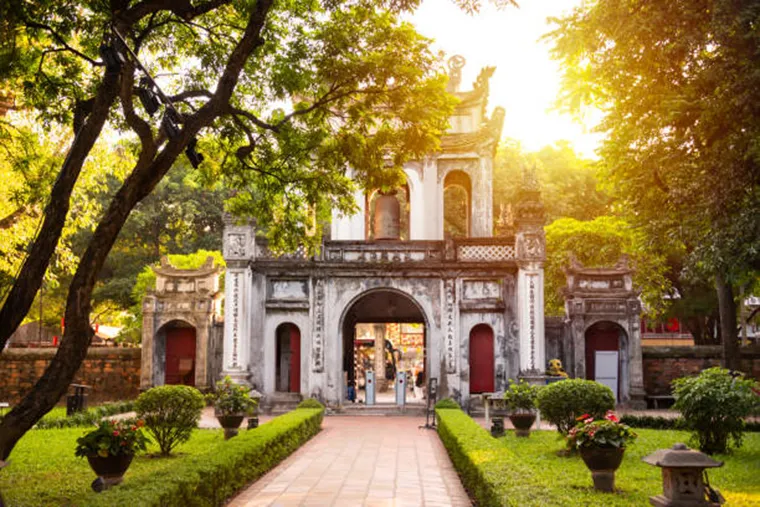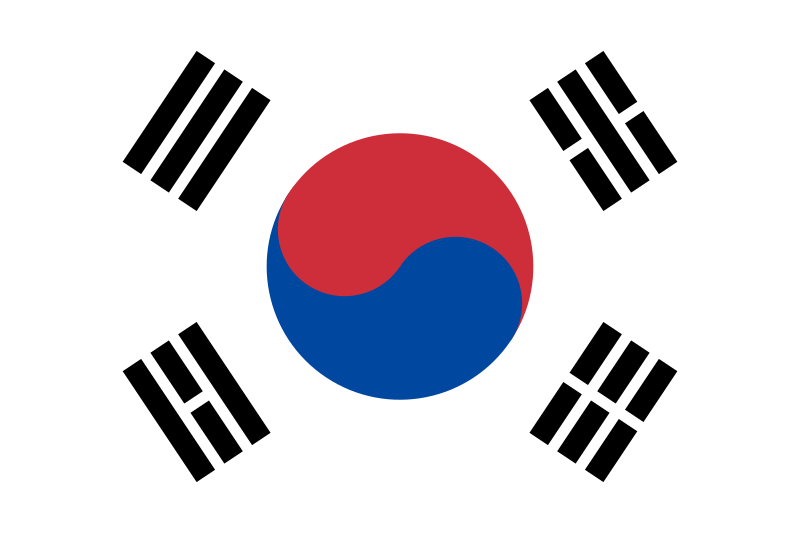Temple of Literature: The Symbol of Knowledge and Culture in Hanoi
The main content of the article
- 1. Historical Significance of the Temple of Literature
- 2. Architectural Beauty of the Temple of Literature
- 2.1. The First Courtyard - Đại Trung Môn (Great Middle Gate)
- 2.2. The Second Courtyard - Khuê Văn Các (Constellation of Literature Pavilion)
- 2.3. The Third Courtyard - Thien Quang Well and Doctor Steles
- 2.4. The Fourth Courtyard - Đại Thành Điện (Great Success Hall)
- 2.5. The Fifth Courtyard - Quốc Tử Giám (Imperial Academy)
- 3. What to Expect When Visiting the Temple of Literature
- 4. Nearby Attractions to Visit
The Temple of Literature (Văn Miếu - Quốc Tử Giám) is one of the most famous historical and cultural landmarks in Hanoi, Vietnam. Built in 1070 during the reign of Emperor Lý Thánh Tông, the temple is dedicated to Confucius, scholars, and intellectuals. It later became Vietnam’s first national university, known as Quốc Tử Giám, where generations of elite students were trained for government positions.
Today, the Temple of Literature stands as a symbol of knowledge, education, and Vietnamese cultural heritage. It is a popular attraction for both tourists and locals, offering a peaceful retreat from the bustling streets of Hanoi. Whether you are interested in history, architecture, or education, this temple is a must-visit destination.
1. Historical Significance of the Temple of Literature
1.1. Origins and Purpose
The Temple of Literature was founded in 1070 by Emperor Lý Thánh Tông to honor Confucius and promote education in Vietnam. It was inspired by the Confucian temples in China and served as a place for scholars to worship and seek wisdom.
In 1076, Emperor Lý Nhân Tông established Quốc Tử Giám, the country’s first national university, within the temple grounds. Initially, the university was reserved for members of the royal family and the elite, but it later opened to talented students from all over Vietnam.
1.2. The Imperial Examinations
For nearly 700 years, Quốc Tử Giám was the most prestigious educational institution in Vietnam. It trained scholars who would later serve as government officials through the Confucian examination system. The imperial examinations were highly competitive, and only the most outstanding students were awarded titles such as Tiến sĩ (Doctorate Degree holders).
To honor these scholars, stone steles were erected in 1484 under Emperor Lê Thánh Tông. These 82 stone steles, each mounted on the back of a stone turtle, bear the names of successful doctoral candidates from the 15th to 18th centuries. Today, they are recognized as UNESCO World Documentary Heritage and serve as a reminder of Vietnam’s long-standing respect for education.

The Temple of Literature – National University is the first university in Vietnam. - Photo source: iStock
2. Architectural Beauty of the Temple of Literature
The Temple of Literature is a prime example of traditional Vietnamese architecture, featuring ancient courtyards, intricate wooden structures, and beautifully landscaped gardens. The temple is divided into five courtyards, each with its unique significance.
2.1. The First Courtyard - Đại Trung Môn (Great Middle Gate)
The entrance to the temple is marked by Văn Miếu Môn (Temple of Literature Gate), an elegant stone gate with traditional Vietnamese motifs. The first courtyard, known as the Great Middle Gate, features lush green gardens and towering trees, creating a serene atmosphere.
The pathway leading to the second courtyard is divided into three sections, symbolizing hierarchical social order:
-
The center path was reserved for the king.
-
The left path was for the mandarins.
-
The right path was for scholars and students.
2.2. The Second Courtyard - Khuê Văn Các (Constellation of Literature Pavilion)
This courtyard houses the famous Khuê Văn Các, an iconic red pavilion built in 1805 under Emperor Gia Long. The pavilion’s name refers to the brightest star in the sky, symbolizing intelligence and knowledge.
Today, Khuê Văn Các is the official symbol of Hanoi City and appears on Vietnam’s 100,000 VND banknote.
2.3. The Third Courtyard - Thien Quang Well and Doctor Steles
At the center of this courtyard is the Thien Quang Well (Well of Heavenly Clarity), a rectangular pond reflecting the surrounding structures. The 82 stone steles, mounted on stone turtles, are located on either side of the courtyard. In Vietnamese culture, turtles symbolize wisdom and longevity, making them a fitting base for these important records of educational achievement.
2.4. The Fourth Courtyard - Đại Thành Điện (Great Success Hall)
This courtyard is the heart of the temple, housing the main sanctuary where Confucius and his four greatest disciples are worshiped. Inside, visitors can see altars, statues, and ancient artifacts dedicated to Confucian scholars. Traditional ceremonies and important academic events are still held here.
2.5. The Fifth Courtyard - Quốc Tử Giám (Imperial Academy)
Originally built in 1076, this courtyard was home to Quốc Tử Giám, the first national university. The original structures were destroyed over time, but in 2000, the Vietnamese government reconstructed a new building to represent the academy’s historical importance.
The courtyard now serves as an exhibition space showcasing ancient books, educational materials, and Vietnam’s rich academic traditions.
To further explore Vietnam's rich historical and cultural heritage, a visit to the thang long imperial citadel is also highly recommended.

The temple is organized into five courtyards, each of which bears unique significance. - Photo source: Pexels
3. What to Expect When Visiting the Temple of Literature
3.1. Opening Hours
Daily: 8:00 AM – 5:00 PM
The temple is open year-round, but the best time to visit is early morning or late afternoon when it is less crowded.
3.2. Entrance Fee
-
Adults: 30,000 VND (~$1.30 USD)
-
Students (with ID): 15,000 VND (~$0.65 USD)
-
Children under 15 years old: Free
3.3. Dress Code and Etiquette
Since the temple is a place of cultural and spiritual significance, visitors should dress modestly (no shorts, sleeveless tops, or revealing clothing). Speaking loudly, running, and engaging in disruptive behavior is discouraged.
3.4. Best Time to Visit
The Temple of Literature is busiest during the Tet Festival (Vietnamese New Year) and exam season, when students visit to pray for academic success. The temple looks stunning in spring (February - April) when flowers bloom, and in autumn (September - November) when the weather is cooler.
For visitors interested in experiencing different aspects of Hanoi's cultural heritage, a visit to Bat Trang Pottery Village offers a look into traditional Vietnamese crafts.

The Temple of Literature is most crowded during Tet and exam season for student prayers, and most beautiful in the spring and autumn. - Photo source: iStock
4. Nearby Attractions to Visit
After exploring the Temple of Literature, visitors can explore other nearby attractions in Hanoi:
-
Hoan Kiem Lake & Ngoc Son Temple: A picturesque lake in the heart of Hanoi, famous for its red The Huc Bridge and Ngoc Son Temple.
-
Ho Chi Minh Mausoleum Complex: A must-visit site where Vietnam’s founding leader, Ho Chi Minh, rests in an embalmed state.
-
Hanoi Old Quarter: The vibrant historic district filled with traditional houses, street food stalls, and local markets.
-
Vietnam Fine Arts Museum: Showcasing an impressive collection of Vietnamese paintings, sculptures, and folk art.
To further enrich your understanding of Hanoi's history, consider a visit to hoa lo prison in hanoi.
For those who love history, culture, and education, the Temple of Literature is an unmissable destination in Hanoi. Whether you are a tourist, a student, or a history enthusiast, this iconic landmark offers a unique and enriching experience.
|
Joytime - Your Vietnam Journey's Servant Expert Follow us for travel tips, local insights, and exclusive offers:
|

Danish Nguyen
Danish Nguyen is a renowned travel blogger in Vietnam with over 5 years of experience sharing unique travel experiences. With a passion for exploring new places, Danish captures incredible moments and provides readers with valuable tips to discover the beauty of his homeland.








.webp)
.webp)








